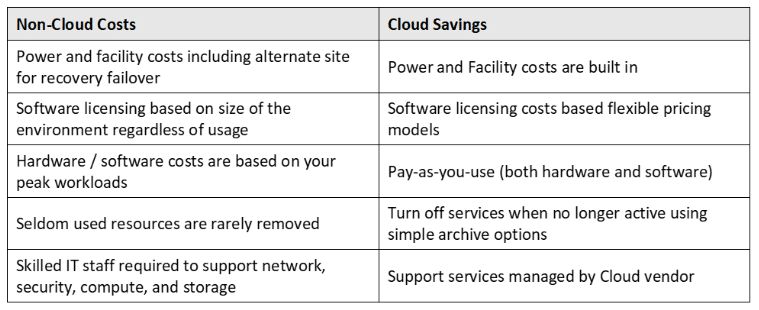The fastest growing SMBs have embraced the Cloud as a method to address four main IT Challenges:
1. High capital costs;
2. Skill shortage;
3. Scalability as the business grows, and;
4. Innovation as business matures.
Results are positive. Surveys indicate:
- 53% of SMB’s using cloud technologies are more likely to experience a rise in revenue.
- 85% of businesses believe the cloud enabled their business to scale and grow faster.
Organizations are finding Cloud computing provides immediate access to the tools needed to digitally transform their business and improve customer experience.
But many businesses are still reluctant to make the move to the Cloud despite these advantages. The reluctance to migrate is particularly evident in Western Canada, where we’ve seen cloud adoption be approximately 25 per cent less than the rest of Canada.
So, what’s holding you back?
Security Exposure
Security is cited as the number one objection to Cloud for 49 per cent of organizations (IDC 2017). Should you be concerned? The security investments made by the major Cloud providers is significant and has created cloud platforms in which security breaches, due to vendor error are rare. In fact, the Cloud has proven to be more secure than most non-cloud environments.
Network Response
A key detractor to cloud for customers in Western Canada is the worry that network connectivity will be insufficient to provide the type of response time and security that end users are accustomed to. With the major public Cloud providers located in Eastern Canada, it is understandable that network connectivity options should be well understood before proceeding. Several networking options exist to address the need for high bandwidth, security and connectivity to Cloud, including solutions based in Saskatchewan.
Service Availability
Service availability, including response time and user downtime, is a concern due to the perceived loss of control over the compute environment. To mitigate this concern, public Cloud vendors provide service levels for all their products with financial credits provided if they are not achieved. The robust engineering of the Cloud environment is such that high availability is consistently achieved. In a worst-case scenario, organizations can further protect critical applications by configuring them to automatically failover to alternate data centers should a Cloud data center go offline.
Cloud Costs
There is a general perception that services in the Cloud are more expensive than in the non-Cloud environment. This is often raised when the comparison between Cloud and non-Cloud platforms does not accurately reflect all the costs that make up the non-Cloud infrastructure.
With all the non-Cloud costs in the table above considered, there’s an almost 50 per cent reduction in support and maintenance costs when the Cloud is chosen. When doing a financial comparison or Cloud ROI, it’s also important to take into account the increased revenue that will take place as you drive your digital transformation results using Cloud services.
Getting Started
It can seem daunting when trying to decide how to get started. The best place to start often with consulting a trusted partner with experience in Cloud migrations. Cloud migration require skill and experience; often organizations who tackle this transition by themselves find it difficult and time consuming. If you want to know how to get started but aren’t sure where to begin, reach out and let’s grab a coffee. We can discuss your particular needs and help define a path forward to your organization to embrace all that the Cloud has to offer.






